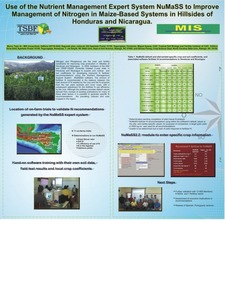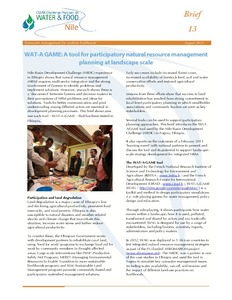Use of the nutrient management expert system NuMaSS to improve management of nitrogen in maize-based systems in hillsides of Honduras and Nicaragua
WAT-A GAME: A tool for participatory natural resource management planning at landscape scale
Water and nitrogen management for risk mitigation in semi-arid cropping systems
Water for rural development: Background paper on water for rural development prepared for the World Bank
This paper on Water for Rural Development is divided into two parts. The first part outlines the most important issues from IWMI's point of view on water for rural development, with a focus on developing countries. This part identifies, discusses and provides recommendations for key areas for interventions in water resources development and management in the context of rural development. The second part of the document provides analyses of present and future water resources in the World Bank's defined regions.
Water, livelihoods and environment in India: frontline issues in water and land management and policy. 2nd IWMI-Tata Annual Partner's Meet Report
Whole farm quantification of GHG emissions within smallholder farms in developing countries
The IPCC has compiled the best available scientific methods into published guidelines for
estimating greenhouse gas emissions and emission removals from the land-use sector. In order
to evaluate existing GHG quantification tools to comprehensively quantify GHG emissions
and removals in smallholder conditions, farm scale quantification was tested with farm data
from Western Kenya. After conducting a cluster analysis to identify different farm typologies
GHG quantification was exercised using the VCS SALM methodology complemented with
Water-use accounts in CPWF basins: Simple water-use accounting of the Indus Basin
This paper applies the principles of water-use accounts, developed in the first of the
series, to the Indus River basin in South Asia. The Indus Basin covers 3 countries, rises
in the Tibetan plateau in the vicinity of Lake Mansarovar in China. Irrigated agriculture
in the Basin is extensive with the construction of dams, barrages, and link canals to
distribute water, with modern engineering to support irrigation starting as early as the
mid 1800s.
Net runoff is about 10% of total precipitation. Irrigated agriculture covers 20% of









